Helping elderly parents downsize represents a significant emotional and logistical challenge for many families. The process involves more than simply sorting through possessions; it requires maneuvering complex feelings of loss, identity, and change. Adult children often find themselves unprepared for the resistance they encounter when suggesting their parents part with items collected over decades. Understanding both the practical and psychological aspects of downsizing creates space for a more harmonious changeover. What approaches can transform this potentially contentious process into an opportunity for meaningful connection?
Key Takeaways
- Start conversations early with sensitivity, using open-ended questions in a comfortable setting when parents are receptive.
- Sort belongings methodically using a three-category system (keep, donate/sell, discard) in small, manageable sessions.
- Acknowledge the emotional journey of letting go while validating feelings about cherished possessions and memories.
- Preserve memories through photos, storytelling, or creating digital archives of sentimental items that can’t be kept.
- Support the transition by personalizing their new space with meaningful items and maintaining regular check-ins afterward.
Understanding the Emotional Journey of Letting Go

While many regard downsizing as a practical step toward simplified living, for aging parents, it represents a profound emotional journey that extends far beyond sorting possessions.
Understanding attachment theory helps explain why homes become extensions of identity—they contain decades of memories, milestones, and experiences that shape one’s sense of self.
When parents face downsizing, they often experience a mourning process similar to grief. This response isn’t merely sentimentality but reflects genuine psychological attachment to spaces and objects.
Building emotional resilience requires acknowledging these feelings rather than dismissing them. The family home may represent independence, achievement, and family legacy, making the prospect of leaving it feel like abandoning part of one’s life story.
Recognition of this emotional complexity forms the foundation for supporting parents compassionately through change.
Starting the Conversation: Timing and Approach Matters
When should families broach the delicate subject of downsizing with aging parents? Timing considerations are vital for productive discussions.
Select moments when parents are well-rested and relaxed, avoiding periods of fatigue or stress. In-person conversations allow family members to observe emotional cues that might be missed during phone calls or video chats.
Effective conversation starters include open-ended questions about future living preferences: “What concerns do you have about maintaining this house?” or “How can we help make your daily routine easier?” These questions invite reflection rather than defensive responses.
Choose interruption-free settings that eliminate distractions and coordinate with all family members’ schedules to guarantee unhurried discussions.
Remember that these conversations often require multiple sessions, allowing parents time to process each step of this significant shift.
Practical Steps to Sort Through Decades of Belongings

Tackling decades of accumulated possessions represents one of the most intimidating aspects of the downsizing process for aging parents. Effective sorting strategies include beginning with practical “must-keep” categories like medications and financial documents, then processing items in manageable batches—one room at a time. This systematic approach prevents overwhelm and establishes momentum.
For efficient decision-making, implement a three-category system: keep, donate/sell, and discard. Items that haven’t been used within the past year generally fall into non-essential categories.
Creating a timeline with clear sorting phases helps maintain progress, while hiring professional organizers can provide objective guidance when emotions run high. Consider designating a “maybe” box for uncertain items to revisit after a cooling period, allowing attachment to diminish naturally and facilitating more rational choices about what truly matters.
- EASY SET-UP: Setting up your Skylight digital frame is a breeze—just plug it in, connect to Wi-Fi, and select a unique S…
- CELEBRATE WITH PHOTO GIFTS: Transform any day into a special occasion by sending a unique photo to your loved ones. Perf…
- A BRIDGE FOR EVERY GENERATION: Our digital photo album makes it easy for everyone to stay connected, offering a cherishe…
Preserving Memories While Reducing Physical Items
As seniors prepare to leave behind familiar spaces filled with decades of possessions, the emotional weight of parting with memory-laden items often presents a greater challenge than the physical aspects of downsizing.
Modern memory preservation approaches balance emotional connections with practical space limitations. Digital methods—such as creating photo albums of cherished items, recording video tours of homes, or using scanning services for important documents—provide meaningful alternatives to keeping physical objects.
Developing a “core collection” of 20-30 exceptionally significant items guarantees the most treasured possessions remain accessible. Establishing rituals to honor changes, journaling about memories tied to specific spaces, and sharing stories about meaningful items with family members can legitimize feelings of loss while strengthening intergenerational bonds.
These techniques respect emotional attachments while facilitating necessary changes.
Managing the Logistics of Moving to a Smaller Space

The practical logistics of relocating to a smaller home represent the cornerstone of successful downsizing for aging parents.
Begin with thorough space optimization by visiting the new residence and measuring key areas including doorways, room dimensions, and storage capacity. This critical step informs furniture evaluation decisions before moving day.
Develop a phased timeline that breaks the process into manageable segments, starting with decluttering room-by-room.
Engage movers with specific downsizing expertise who can provide valuable guidance on space constraints and packing efficiency.
Label boxes meticulously by room and contents to facilitate organized unpacking, and set aside essential items in clearly marked containers for immediate access upon arrival.
These systematic approaches transform potentially overwhelming logistics into an orderly process that respects both emotional needs and practical space limitations.
Creating a Supportive Transition to New Living Arrangements
Successful downsizing extends far beyond physical relocation, requiring a supportive emotional framework that honors parents’ feelings while gently guiding them through significant life changes.
Creating supportive environments begins with personalizing living spaces by displaying cherished possessions and maintaining familiar routines that provide comfort and continuity.
Caregivers should acknowledge the emotional connections that parents have to their belongings through active listening and validation. Rather than rushing the process, allowing parents to express their feelings about the shift helps them process the change.
Honoring parental attachment to possessions through validation creates space for emotional processing during life transitions.
Post-move support remains essential – coordinating with care staff about preferences, facilitating visits from friends, and advocating for continued autonomy in daily decisions.
These thoughtful approaches help preserve dignity and identity, transforming a potentially traumatic downsizing experience into an opportunity for a positive new chapter.
Frequently Asked Questions
How Do Tax Implications Differ When Downsizing Versus Selling a Home?
When downsizing, homeowners may face different tax implications than with standard home sales.
Capital gains tax exclusions of $250,000 (single) or $500,000 (married) apply if ownership and residency requirements are met.
Smaller properties typically result in lower property taxes, creating long-term savings.
However, if the profit from selling exceeds exclusion limits, particularly in high-value areas, homeowners must prepare for potential capital gains tax on the difference.
What Legal Documents Should Be Updated After Parents Downsize?
After parents downsize, several legal documents require updates to reflect their new circumstances.
Wills should be revised to account for changed assets and property ownership. Powers of attorney need verification to confirm designated agents remain appropriate for medical and financial decisions.
Additionally, property deeds, insurance policies, beneficiary designations, and identification documents should all be updated with current addresses and asset information to maintain legal clarity and protection.
How Can Technology Solutions Specifically Help Seniors During Downsizing?
Technology solutions offer seniors valuable support during downsizing through virtual organizing platforms that connect them with professional organizers remotely.
Digital inventory management apps streamline the cataloging process, reducing decision fatigue while tracking possessions.
Additionally, smart home systems with voice control simplify environmental management while sorting belongings, and wearable tech provides health monitoring that addresses isolation concerns.
These innovations combine to make the downsizing process more efficient, safe, and less overwhelming.
- Simple to set up. Seriously secure. Get ready to protect right out of the box. Just plug in the Base Station and camera,…
- 1 FREE month of professional monitoring for fast police response when you need it most. With optional monitoring service…
- Complete control of your system with the SimpliSafe App – Arm, disarm and protect anytime, anywhere.
When Should Professional Senior Move Managers Be Considered?
Professional senior move managers should be considered when families face complex moving logistics requiring specialized coordination, or when emotional support is needed during challenging changes.
They become particularly valuable when multiple steps like sorting, packing, and disposal must occur simultaneously, or when seniors experience cognitive limitations affecting decision-making.
Their expertise proves essential for preserving dignity during intimate downsizing tasks and mediating potential family conflicts over possessions, especially within strict relocation timelines.
How Do I Handle Disagreements Between Siblings About Parents’ Belongings?
Resolving sibling disagreements over parents’ belongings requires structured sibling communication strategies.
First, establish regular family meetings with clear agendas to discuss items systematically. Document decisions using shared spreadsheets or photos to maintain transparency.
Consider implementing conflict resolution techniques such as dividing responsibilities by categories or hiring neutral third parties like geriatric care managers.
Pre-agreed valuation systems can help prioritize items based on emotional significance versus monetary worth, reducing potential disputes during the downsizing process.
Bottom Line
Helping parents downsize requires patience, empathy, and practical organization. By approaching this shift with sensitivity to their emotional attachment to possessions, adult children can transform a potentially stressful process into a meaningful journey. With proper planning, clear communication, and ongoing emotional support, families can navigate this significant life change together, ensuring parents feel respected while creating comfortable new living arrangements that honor their past.






